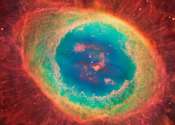Dual-color lasers could lead to cheap and efficient LED lighting
(Phys.org) —A new semiconductor device capable of emitting two distinct colours has been created by a group of researchers in the US, potentially opening up the possibility of using light emitting diodes (LEDs) universally ...








